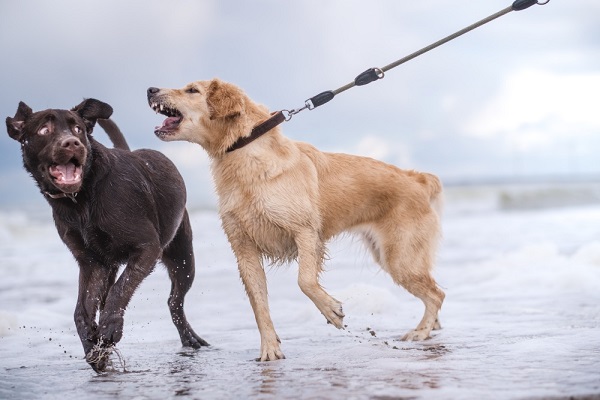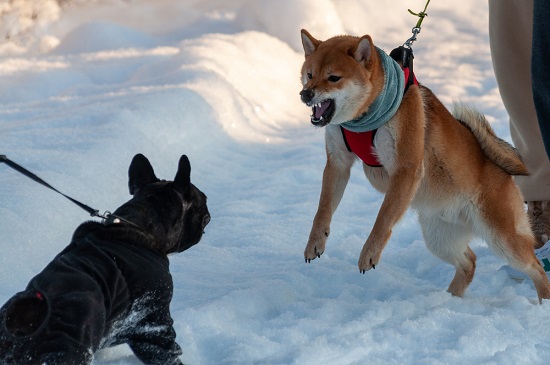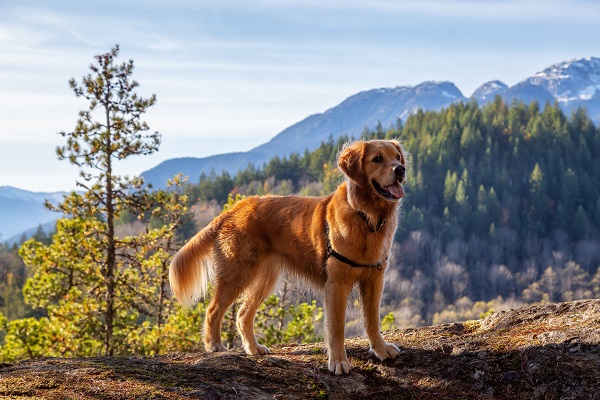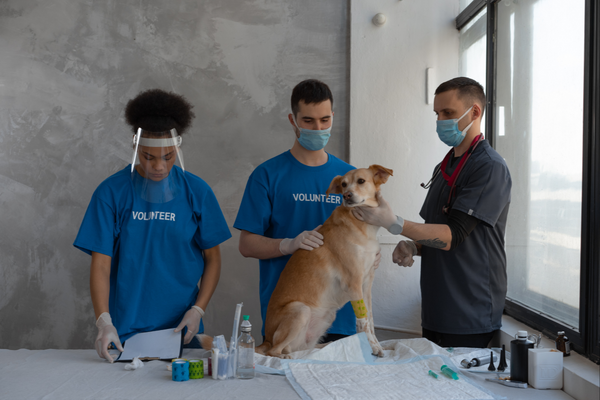The dog park is a paradise for your pup: they enjoy themselves, interact and play with other dogs, and don’t have any problems with anything or anyone. But whenever the leash is on, they become a completely different dog.
They start to bark, growl, and even lunge at others. But why does this happen? Why does your dog seem to develop a whole-new aggressive personality whenever they are on a leash?
This is called leash reactivity, and it happens to an incredibly long list of dogs. Keep reading to learn more about its signs, causes, and, most importantly, how to treat it.
What is leash reactivity in dogs?
Leash reactivity is when a dog reacts poorly to a certain stimulus, which can be another dog, people, cars, bikes, children, and even other animals like squirrels. The most remarkable trait of this condition is that dogs only display these behaviors on a leash. They usually don’t react like this when they are off-leash.
Although many dogs suffer from leash reactivity, it’s still important to learn to identify this condition and not confuse it with something else. That’s why we will review some of the most common signs of leash reactivity in dogs.
- Barking at stimuli such as other dogs, cars, bikes, and people
- Staring fixedly at the stimulus
- Freezing up while staring at the stimulus and refusing to walk
- Biting the leash
- Frenetically lunging the leash toward the stimulus
- Redirecting onto the leash or you
If your dog displays any of these symptoms while on a leash, they probably experience leash reactivity.
But, also remember that if your dog just likes to chase squirrels or other animals like birds and rabbits when they are both on and off-leash, they probably don’t suffer from leash reactivity and just have a pretty high prey drive.
Understanding your dog: causes of leash reactivity
The most important thing to remember about this topic is that your dog does not leash reactive because they want to or because they want to bring you problems. It is something that they cannot control. They act this way unwittingly.
Now that we have established that, let’s understand why your dog has leash reactivity. We’ll list some of the most common reasons why dogs usually display this behavior, so you can try to identify which one suits your pup best.
Frustration
This tends to be one of the main causes why dogs experience leash reactivity. Some dogs are enthusiastic and want to greet every dog or person they encounter on their walks. So, whenever they encounter one of these stimuli, they want to go near it, smell it, and say hi. But, when they feel they can’t do so because of the leash, they display reactive behavior.
Enthusiastic dogs can feel frustrated whenever they feel they can’t express their eagerness because they are restrained by a leash. And this causes reactiveness.
Body language misconception
This is another reason behind leash reactivity in dogs, and it’s also caused by the presence of the leash and its effects on dogs. When two off-leash-friendly pups meet at the park, they have an appropriate greeting ritual. They tend to gradually approach each other, displaying an arc motion while wagging their tails. Once they meet, they sniff each other’s bottoms and decide whether they want to engage in a play sesh or keep going their way.
When dogs are leashed, they usually can’t do this. Firstly, they are forced, not by the owners, but by the nature of leash walking, to have a direct face-to-face encounter. They are not able to do the arc motion walk they generally display. Some dogs might not be bothered by this. But others can identify this direct straight walk toward them as a sign of aggression, which can set them off and make them react poorly.
Coming across another dog on a leash causes both of them to misinterpret the other pup’s body language, and that can make them show reactive behavior.
Fear
Has it ever happened to you that your dog shows reactive leash behavior only with certain dogs? This could be because your dog is scared of them. But why do they always show this behavior when they are on a leash and not off-leash? Shouldn’t this always be the case if they are scared of certain dogs?
Your dog is probably always scared of the same types of dogs, regardless of being on or off-leash. The thing is that when they are off-leash, they can choose how to face that fear. They can walk away, get behind you or ignore the dog they are scared of. But there aren’t many possibilities when they are on a leash. They feel vulnerable, like they can’t protect themselves in the way they do when they are off-leash.
This results in reactive behavior. They start to bark, growl, and lunge from the leash. They are scared and know they can’t hide or walk away because a leash is holding them back. So, this is the only way they know how to defend and protect themselves.
Stressed owner = stressed dog
Incorrect management of the leash can also contribute to our dog’s reactivity. Picture this: you see a stimulus nearby that you know your dog won’t like, so you start bringing your dog closer to you by pulling from the leash and making it tighter. By doing so, you are confirming to your dog that there is something to be stressed about, something that will justify their reactive behavior.
If we are stressed, our dogs will feel it. We obviously can’t help feeling this way, but what we can control is our reaction. Don’t pull from the leash. Show your dog that everything is okay and they are not in danger. You are both safe.
How to train a reactive dog on a leash
Now that we have the tools to understand our dogs and their reasons, let’s talk about the tools to train them and help them overcome this problem, so your walks can be as enjoyable as they should be.
To help your dog overcome their leash reactivity, you should follow a two-step process. Before we start, there are some things you should keep in mind:
- No online guide will be as helpful as a professional dog behaviorist. If you carry out this guide, you can see some great results. But if that’s not the case, don’t panic. It’s neither your dog’s fault nor yours. It’s just time to seek the help of a professional.
- Be patient. The change won’t happen overnight. This requires perseverance, discipline, time and
Now we are ready to dive right into it.
Phase 1: indoor training
The training starts at home. Here you’ll learn how to redirect your dog’s attention whenever necessary, and your dog will learn to do so successfully.
The first step is to choose a keyword for this command, such as “yes” or “look.” You can also use a clicker.
The next step is to associate that word or sound with your dog looking at you. To accomplish that, you’ll need an assistant to distract your dog. They can do so with a toy, for example. The second your dog looks at the stimulus your helper is presenting, say the chosen word and give your dog a treat once he looks at you.
So, let’s review this phase.
- You set the training station with your dog and a
- You sit your dog in front of
- The helper tries to get your dog’s
- The instant second your dog looks at the helper, you use the command word and give them a treat after they look at
And then, you repeat this exercise until your dog gets it right.
Phase 2: outdoor training
Once your pup has mastered the first phase of this training, they are ready for the outside world. This phase repeats the same process as the first one but without the helper. You will do so with the natural stimuli that appear on the street. The second a dog or a person triggers your dog and passes by the spot where you are sitting, you use the command word and redirect your dog’s attention to you and give a treat.
One important thing to remember is that you should maintain a certain distance from the stimuli. You can practice this training exercise in your front yard. In the beginning, stand with your dog as close to your front door and as far from the street as possible. As they keep improving, they start to move closer to the street.
With this positive reinforcement, you will help your dog associate the presence of the stimuli that are used to trigger them with something good.
Pro Tip
To make the most out of this training, the treats you use are of vital importance. We recommend using a mix of their favorite food snack and some healthy treats. For example, if your dog loves cheese, use some pieces of that delicious snack, but also include some healthy chews, such as joint supplements, omega-3 allergy relief supplements, or multivitamins.
By doing so, you will not only be helping your dog overcome their leash reactivity and take care of their health and well-being (while giving them delicious treats they will be forever grateful for).

 DogExpress
DogExpress





















 in Chandigarh, India.
in Chandigarh, India. 
